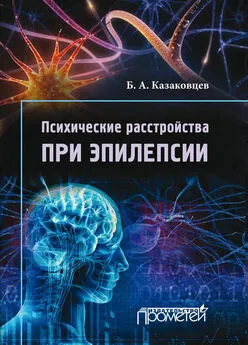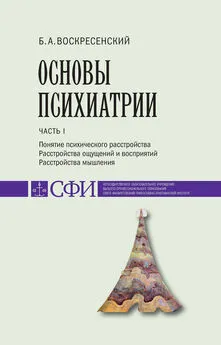Рэндольф Несси - Хорошие плохие чувства. Почему эволюция допускает тревожность, депрессию и другие психические расстройства
- Название:Хорошие плохие чувства. Почему эволюция допускает тревожность, депрессию и другие психические расстройства
- Автор:
- Жанр:
- Издательство:неизвестно
- Год:2021
- Город:Москва
- ISBN:9785001393931
- Рейтинг:
- Избранное:Добавить в избранное
-
Отзывы:
-
Ваша оценка:
Рэндольф Несси - Хорошие плохие чувства. Почему эволюция допускает тревожность, депрессию и другие психические расстройства краткое содержание
Отчасти дело в том, что такие эмоциональные состояния, как тревожность, плохое настроение и скорбь, сохранялись и формировались в ходе естественного отбора, поскольку они полезны. Правда, до известного предела.
Страх помогает нам избежать опасности – но ценой неизбежных ложных тревог. Уныние позволяет не тратить силы на погоню за несбыточным, но часто перерастает в патологическую депрессию. Другие психические расстройства, такие как наркотическая или алкогольная зависимость или анорексия, возникают из за несоответствия между древними настройками нашего организма и современной средой. Веские эволюционные основания имеются и у сексуальных расстройств, и у сохранения генов шизофрении.
Опираясь на показательные случаи из собственной клинической практики и открытия эволюционной биологии, доктор Рэндольф Несси не только отвечает на вопрос, почему естественный отбор сформировал у человека такую хрупкую психику, но и пытается наметить пути к облегчению этих страданий с учетом личных обстоятельств и индивидуальных особенностей.
Хорошие плохие чувства. Почему эволюция допускает тревожность, депрессию и другие психические расстройства - читать онлайн бесплатно ознакомительный отрывок
Интервал:
Закладка:
35
Williams GC. Natural selection, the costs of reproduction, and a refinement of Lack’s principle. Am Nat. 1966 Nov – Dec; 100(916): 687–90.
36
Данная глава представляет собой популярное изложение материала статьи Nesse R. M., Stein D. J. Towards a genuinely medical model for psychiatric nosology. BMC Medicine . 2012; 10 (1): 5.
37
Grebb JA, Carlsson A. Introduction and considerations for a brain-based diagnostic system in psychiatry. In: Sadock BJ, Sadock VA, Ruiz P, Kaplan HI, editors. Kaplan & Sadock’s comprehensive textbook of psychiatry. 9th ed. Philadelphia: Wolters Kluwer Health/Lippincott Williams &Wilkins; 2009. pp. 1–4.
38
Kendell RE, Cooper JE, Gourlay AJ, Copeland JRM, Sharpe L, Gurland BJ. Diagnostic criteria of American and British psychiatrists. Arch Gen Psychiatry. 1971 Aug 1; 25(2): 123–30.
39
Rosenhan DL. On being sane in insane places. Science. 1973; 179 (4070): 250–8.
40
American Psychiatric Association. Diagnostic and statistical manual of mental disorders. 2nd ed. Washington (DC): American Psychiatric Association; 1968.
41
American Psychiatric Association. Diagnostic and statistical manual of mental disorders. 3rd ed. Washington (DC): American Psychiatric Association; 1980.
42
Wilson M. DSM – III and the transformation of American psychiatry: a history. Am J Psychiatry [Internet]. 1993 Mar 1; 150(3): 399–410. Available from: http://ajp.psychiatryonline.org/cgi/content/abstract/150/3/399.
43
Spitzer RL, Williams JB, Gibbon M, First MB. The structured clinical interview for DSM – III-R (SCID). I: History, rationale, and description. Arch Gen Psychiatry. 1992 Aug; 49(8): 624–9.
44
Andreasen NC. DSM and the death of phenomenology in America: an example of unintended consequences. Schizophr Bull. 2007 Jan 1; 33(1): 108–12.
45
Hyman SE. Can neuroscience be integrated into the DSM – V? Nat Rev Neurosci. Sep;8(9): 725–32.
46
Andreasen NC. DSM and the death of phenomenology in America.
47
Коморбидность – сосуществование у одного пациента двух или более заболеваний, синдромов или психических расстройств, связанных между собой единым патогенетическим механизмом или совпадающих по времени. – Прим. пер .
48
Kessler RC, Anthony JC, Blazer DG, Bromet E, Eaton WW, Kendler K, et al. The US National Comorbidity Survey: overview and future directions. Epidemiol Psichiatr Soc. 1997 Jan; 6(1): 4–16.
49
Angst J, Vollrath M, Merikangas KR, Ernst C. Comorbidity of anxiety and depression in the Zurich Cohort Study of Young Adults. In: Maser JD, Cloninger CR, editors. Comorbidity of mood and anxiety disorders. Arlington (VA): American Psychiatric Association; 1990, pp. 123–37.
50
Gorman JM. Comorbid depression and anxiety spectrum disorders. Depress Anxiety. 1996; 4(4): 160–8.
51
Kessler RC, Berglund P, Demler O, Jin R, Koretz D, Merikangas KR, et al. The epidemiology of major depressive disorder: results from the National Comorbidity Survey Replication (NCS-R). JAMA. 2003; 289(23): 3095–105.
52
Sartorius N, Üstün TB, Lecrubier Y, Wittchen H-U. Depression comorbid with anxiety: results from the WHO study on psychological disorders in primary health care. Br J Psychiatry. 1996 Jun; 30: 38–43.
53
Frances A, Egger HL. Whither psychiatric diagnosis. Aust N Psychiatry. 1999; 33: 161–5.
54
Insel TR, Wang PS. Rethinking mental illness. JAMA. 2010 May 19; 303(19): 1970–1.
55
Greenberg G. Inside the battle to define mental illness. Wired [Internet]. 2010 Dec 27. Available from: http://www.wired.com/magazine/2010/12/ff_dsmv/all/1.
56
Frances A. A warning sign on the road to DSM – V: beware of its unintended consequences. Psychiatric Internet]. 2009 Jun 27 [cited 2017 May 9]. Available from: http://www.psychiatrictimes.com/articles/warning-sign-road-dsm-v-beware-its-unintended-consequences.
57
Там же.
58
Kupfer DJ, First MB, Regier DA. A research agenda for DSM – V [Internet]. Washington (DC): American Psychiatric Association; 2002. xxiii, 307. Available from: http://www.loc.gov/catdir/toc/fy033/2002021556.html.
59
Mezzich JE. Culture and psychiatric diagnosis: a DSM – IV perspective. Washington DC): American Psychiatric Press; 1996.
60
Phillips KA, First MB, Pincus HA. Advancing DSM: dilemmas in psychiatric diagnosis. Washington (DC): American Psychiatric Association; 2003.
61
American Psychiatric Association. Diagnostic and statistical manual of mental disorders: DSM-5 [Internet]. 5th ed. Arlington (VA): American Psychiatric Association; 2013. Available from: http://dsm.psychiatryonline.org/book.aspx?bookid=556.
62
Akil H, et al. The future of psychiatric research.
63
Wakefield JC. Disorder as harmful dysfunction: a conceptual critique of DSM – III-R’s definition of mental disorder. Psychol Rev. 1992; 99(2): 232–47.
64
First M, Wakefield JC. Defining “mental disorder” in DSM – V. Psychol Med. 2010; 40(11): 1779–82.
65
Wakefield JC. The concept of mental disorder: diagnostic implications of the harmful dysfunction analysis. World Psychiatry. 2007; 6(3): 149.
66
Там же.
67
Schopenhauer A, Hollingdale RJ. Essays and aphorisms. Harmondsworth (UK): Penguin Books; 2004, p. 41. Шопенгауэр, Артур. К учению о страданиях мира // Афоризмы и максимы. Пер. Ф. В. Черниговца. СПб., 1895.
68
Dunbar RI. The social brain: mind, language, and society in evolutionary perspective. Annu Rev Anthropol. 2003; 32: 163–81.
69
Hamilton WD. The genetical evolution of social behaviour. I and II. J Theoret Biol. 1964; 7: 1–52.
Интервал:
Закладка:










